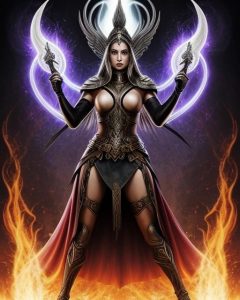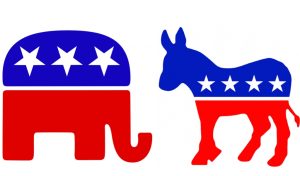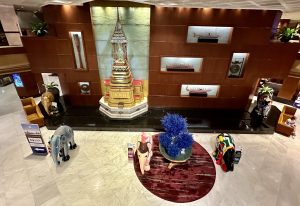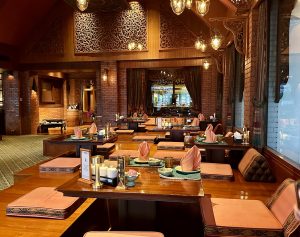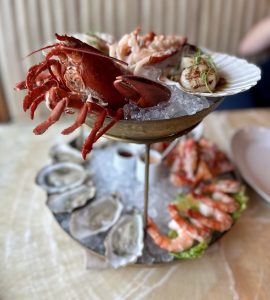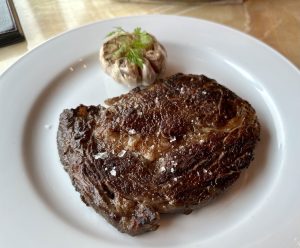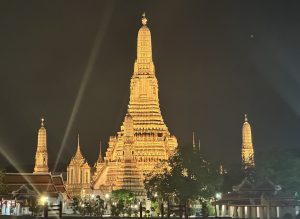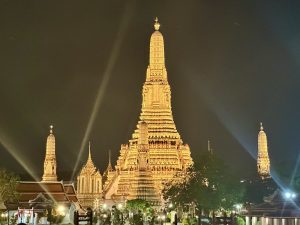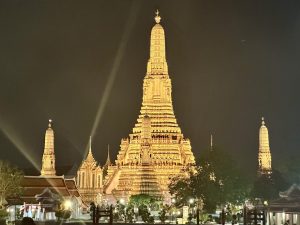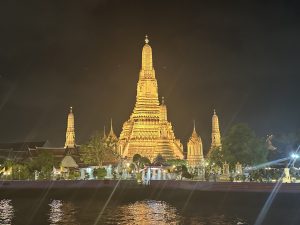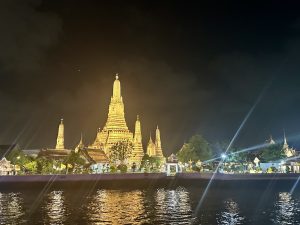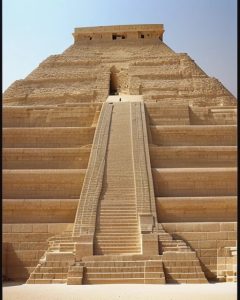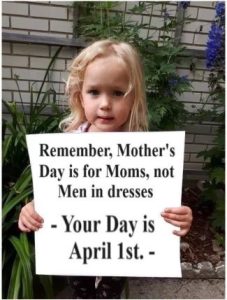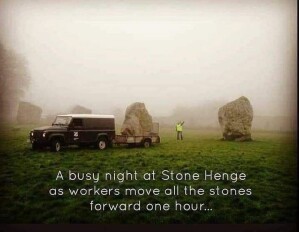The balance between good and evil in the universe is a complex and philosophical concept that has been pondered by thinkers and scholars for centuries. Many theories have emerged to explain what keeps this delicate equilibrium. One perspective suggests that the interplay between good and evil is an inherent part of the natural order, where one cannot exist without the other. This viewpoint argues that good and evil are two sides of the same coin, and their coexistence is necessary for the functioning of the universe. Another theory proposes that the balance is maintained through the actions and choices of individuals. It suggests that the collective efforts of morally upright individuals contribute to the preservation of goodness, while the actions of those with ill intentions or malicious motives fuel the forces of evil. Additionally, some believe that a higher power or a cosmic force oversees the balance between good and evil, ensuring that neither dominates the other. This belief asserts that the universe has a built-in mechanism that corrects any deviation from this equilibrium, ultimately restoring the harmony between these opposing forces. Ultimately, the concept of balance between good and evil in the universe remains a subject of deep contemplation and debate, with various perspectives offering valuable insights into this profound and timeless question.
Clash of Ideologies: The Enduring Battle Between Conservatism and Liberalism
Conservatism and liberalism have been at odds in the United States for decades, with each side staunchly defending their beliefs and attacking the other’s. This ongoing conflict can be attributed to a multitude of factors, including differing ideologies, values, and political agendas. At its core, conservatism is a belief in traditional values, limited government intervention, and individual responsibility. On the other hand, liberalism emphasizes social progress, equality, and government involvement in promoting the common good. These fundamental differences in beliefs and values have led to a constant battle between the two ideologies in American politics.
One of the main reasons for the ongoing war between conservatism and liberalism in the United States is their opposing views on government involvement and the role of the state. Conservatives believe in limited government intervention, favoring a smaller government with less regulation and lower taxes. They argue that this promotes individual freedom and allows for a free market to thrive. On the other hand, liberals advocate for a larger government with more regulations and higher taxes to provide for the needs of the people and promote social equality. This fundamental difference in the role of government has led to heated debates and clashes between the two sides.
Moreover, the issue of social and cultural values has also played a significant role in the ongoing war between conservatism and liberalism. Conservatives tend to hold traditional values and beliefs, such as opposition to abortion and same-sex marriage, while liberals support progressive social values and policies. This has led to a clash of opinions on issues such as women’s rights, LGBTQ+ rights, and immigration, among others. Each side believes that their values are superior and should be upheld by society, leading to a never-ending battle for dominance.
Another factor contributing to the war between conservatism and liberalism is the influence of media and political leaders. With the rise of 24-hour news coverage and social media, the political landscape has become more polarized than ever before. News outlets often cater to one side or the other, further deepening the divide between conservatives and liberals. Additionally, political leaders often use divisive rhetoric to appeal to their base, painting the other side as the enemy. This has only served to fuel the war between the two ideologies and make compromise and cooperation increasingly difficult.
In conclusion, conservatism and liberalism are at war in the United States due to their differing views on government involvement, social values, and the influence of media and political leaders. This ongoing conflict has resulted in a highly polarized political climate, making it challenging to find common ground and work towards solutions that benefit all Americans. It is crucial for both sides to engage in respectful and open-minded dialogue to bridge the gap and move towards a more united and prosperous nation.
Beyond Bitcoin: Unleashing the Potential of Blockchain Revolution
Experience the revolutionary power of blockchain technology, originally created for Bitcoin, as it transforms the digital transaction landscape. With its decentralized and distributed ledger system, blockchain provides a secure and transparent platform for recording transactions across multiple computers. Breaking away from traditional financial systems, this technology allows for peer-to-peer transactions without the need for intermediaries like banks. But its potential extends far beyond digital currencies, revolutionizing industries such as supply chain management, healthcare, and voting systems. By harnessing the power of blockchain, supply chains become more efficient and transparent, reducing fraud and improving traceability. In healthcare, it enhances data security and streamlines processes like medical record-keeping. And in voting systems, it fosters trust and transparency during elections. Of course, like any cutting-edge technology, blockchain faces challenges to widespread adoption. Concerns such as scalability, regulatory ambiguity, and environmental impact from cryptocurrency mining must be addressed. Yet, the disruptive force of blockchain is undeniable, with endless possibilities yet to be explored. As it evolves and overcomes obstacles, blockchain has the potential to revolutionize multiple industries and shape the future of digital transactions.
AI Sentry: Transforming Security Analytics for the Cyber Frontier
This article delves into the realm of Security Analytics and its transformation through the integration of Artificial Intelligence (AI). We find ourselves in an era where organizations grapple with the escalating complexity of cyber threats, realizing that traditional security analytics approaches fall short. However, a glimmer of hope shines through AI, specifically encompassing machine learning and advanced analytics, which revolutionize threat detection, incident response, and adaptive security measures.
The ever-evolving threat landscape necessitates a sophisticated approach to security analytics. We witness the struggle of traditional methods heavily reliant on manual analysis, unable to keep up with the magnitude and intricacy of modern cyber threats. It is in this context that we delve into how AI, armed with its data-driven and adaptive capabilities, fortifies security analytics to establish a robust defense against cyber adversaries.
Machine learning algorithms act as a catalyst, empowering security analytics to detect patterns, anomalies, and potential threats within vast datasets. By scrutinizing historical data and identifying trends, AI systems proactively pinpoint both familiar and emerging threats, reducing response times and minimizing the risk of undetected security incidents.
The incorporation of AI-driven behavioral analytics significantly enhances security analytics by establishing baselines for normal user and system behavior. The identification of deviations from these baselines triggers alerts, enabling early detection of abnormal activities indicative of a security breach. This heightened level of insight improves the accuracy and efficiency of security monitoring.
Let us not overlook the role of AI in facilitating predictive analytics within security assessments, enabling organizations to anticipate and mitigate potential risks. By analyzing historical data and identifying risk factors, AI models provide insightful predictions about future threats, vulnerabilities, and areas requiring enhanced security measures. This proactive approach aids in preemptive risk management.
In the realm of incident response, AI plays a crucial role in automating processes within security analytics frameworks. By harnessing the power of machine learning models, organizations can automate the identification, containment, and eradication of security incidents. This accelerates response times and minimizes the impact of security breaches.
The integration of AI with threat intelligence further enhances the contextual understanding of security events. AI-driven security analytics systems possess the ability to analyze massive amounts of threat data in real-time, providing actionable intelligence to fortify defenses. This integration ensures organizations remain well-informed about the latest threats and vulnerabilities.
To ensure the effectiveness of security measures against rapidly evolving cyber threats, AI allows for continuous monitoring of security metrics and adaptation of security analytics strategies. The ability to learn from new data and adjust analytics models in real-time guarantees resilient security measures.
While we recognize the substantial benefits of AI in security analytics, it is essential to confront challenges such as explainability, model interpretability, and the potential for biased decision-making. Striking a balance between the advantages of automation and the necessity for human oversight and ethical considerations becomes imperative.
In conclusion, the integration of AI into security analytics represents a transformative leap in our cybersecurity capabilities. By harnessing the power of machine learning and advanced analytics, we have the opportunity to build proactive, adaptive, and intelligent security frameworks. As technology continues to evolve, the synergy between human expertise and AI-driven security analytics will rise as a crucial element in fortifying defenses against emerging cyber threats. Let us embrace this transformative power and contribute to a more secure digital landscape.
Malevolent Beings: Unveiling the Dark Forces Across Cultures and Narratives
Malevolent beings refer to entities or creatures that possess a malicious or evil nature, often seeking to cause harm or inflict suffering upon others. These beings can be found in various mythologies, folklore, and even in popular culture. Often depicted as supernatural entities, malevolent beings come in different forms and have different abilities depending on the cultural context. For instance, in Greek mythology, the Furies were three female spirits who punished those guilty of crimes, while in Norse mythology, the Jotun were giant-like beings who posed a threat to the gods. Malevolent beings are often driven by a deep-seated hatred, envy, or a desire for power. They are known for their cunning and deceptive nature, often manipulating others to achieve their malevolent goals. Whether it be demons, witches, vampires, or other dark entities, malevolent beings have captivated human imagination for centuries, serving as cautionary tales and symbols of the darker side of human nature. In literature and film, these malevolent beings are often used as antagonists, challenging the protagonists and creating tension in the narrative. Despite their terrifying nature, malevolent beings also serve as a reminder of the inherent struggle between good and evil, and the importance of compassion, courage, and resilience in the face of adversity.
Navigating the Complexities of Marijuana Laws in the United States
The law surrounding marijuana use in the United States is a complex and ever-evolving topic. Currently, marijuana is classified as a Schedule I controlled substance, meaning it is considered to have a high potential for abuse and no accepted medical use. However, many states have taken steps to legalize marijuana for medical or recreational purposes, creating a patchwork of laws and regulations across the country. In states where marijuana is legal, individuals over the age of 21 can purchase and possess a certain amount of the drug for personal use. However, it is important to note that even in these states, there are restrictions on where and how marijuana can be consumed, and it is still illegal at the federal level. Additionally, there are still many states where marijuana is completely illegal, and possession can result in criminal charges. This divide between state and federal laws has led to confusion and challenges for both law enforcement and individuals seeking to use marijuana. As more research is conducted on the potential benefits and risks of marijuana, it is likely that the laws and attitudes surrounding its use will continue to shift and change in the United States.
Green Revolution: The Drive Behind Marijuana Legalization and Health Discoveries
In recent years, many states across the United States have moved towards legalizing marijuana, driven by a convergence of factors. One primary driver has been the increasing acknowledgment and exploration of marijuana’s potential medicinal benefits. Advocates for alternative medicine, medical professionals, and patients have spearheaded efforts for legalization, spurred by growing acceptance and understanding of marijuana’s therapeutic properties.
Economic considerations have also played a pivotal role in the legalization movement. States facing economic downturns and budget deficits have recognized the financial advantages of legalizing marijuana. The legal cannabis industry offers prospects for significant tax revenue and job creation, making it an attractive option for states seeking economic growth.
Changing societal attitudes towards marijuana have further fueled the legalization push. With a rising number of individuals viewing marijuana as less harmful than previously believed and supporting its legalization, public opinion has shifted towards broader acceptance.
Moreover, there is a growing awareness of the racial disparities in marijuana-related arrests and convictions, prompting states to view legalization as a step towards addressing social justice issues and reducing inequalities in law enforcement.
The success of legalized marijuana in pioneering states like Colorado and Washington has provided a model for others, demonstrating the feasibility of regulation and taxation. This success story has emboldened additional states to consider reaping the benefits of legalization.
Meanwhile, cannabis, commonly known as marijuana, has been the subject of extensive debate, yet emerging research has uncovered its potential health advantages. Notably, cannabis has shown efficacy in alleviating chronic pain associated with ailments like arthritis, multiple sclerosis, and cancer treatment side effects. Additionally, cannabis can alleviate nausea and stimulate appetite, providing relief to chemotherapy patients and individuals with eating disorders. Studies suggest cannabis’s potential in managing mental health issues such as anxiety and depression, and its neuroprotective properties offer promise against conditions like Alzheimer’s disease. Cannabis has also been linked to improved sleep quality, potentially offering a remedy for insomnia sufferers.
While these health benefits offer promise, further research is crucial to fully understand cannabis’s health impact. Nevertheless, the growing body of evidence suggests that cannabis, once a topic of controversy, may play a significant role in advancing health and wellness.
Cannabis Culture: Unveiling the Origins and Impact of 4/20
4/20, also known as “Weed Day” or “Marijuana Day,” has become a cultural phenomenon celebrated by many around the world. But how did this seemingly random date become synonymous with marijuana? The origins of 4/20 can be traced back to a group of high school students in California in the early 1970s. These students, known as “The Waldos,” would meet at 4:20 PM every day to search for a rumored abandoned marijuana crop. This became their code for smoking marijuana and eventually, 4:20 became their code for any marijuana-related activities. The term gained popularity in the 1990s thanks to the spread of cannabis culture and the rise of the internet. With the rise of social media, 4/20 became a worldwide phenomenon, with people using the date as an excuse to gather with friends and partake in marijuana use. It has also become a day for advocacy and activism, with many using the date to push for the legalization of marijuana and to bring attention to the medicinal benefits of the plant. Today, 4/20 is celebrated by millions of people around the world, with events, concerts, and festivals dedicated to the plant. While the origins of this date may have been rooted in a search for a hidden crop, it has evolved into a day of celebration and advocacy for the legalization and acceptance of marijuana.
Navigating the Connected Cosmos: Unveiling the Wonders of IoT
The Internet of Things (IoT) has become a ubiquitous term in today’s digital age, referring to the vast network of interconnected devices that are embedded with sensors, software, and other technologies. This network allows these devices to collect and exchange data, creating a web of information that can be accessed and utilized in various ways. From smart home appliances to industrial machinery, IoT has transformed how we interact with the physical world, blurring the lines between the digital and physical realms.
One of the key advantages of IoT is its ability to enable real-time monitoring, automation, and optimization. With sensors and software embedded in devices, data can be collected and analyzed in real-time, providing valuable insights and improving decision-making processes. For example, in a smart home, IoT devices such as thermostats and lighting systems can be controlled and adjusted remotely, improving energy efficiency and convenience for the user. In industrial settings, IoT technology can be used to monitor and optimize production processes, leading to increased productivity and cost savings.
Additionally, IoT has greatly enhanced convenience for users in various aspects of their daily lives. From wearable fitness trackers to voice-controlled virtual assistants, IoT has made it possible for individuals to access information and services with ease. This has also extended to healthcare, where IoT devices are used to monitor and track patients’ health, providing early warnings for potential health concerns.
Despite its numerous benefits, the widespread adoption of IoT has raised concerns regarding data privacy, security vulnerabilities, and interoperability challenges. With sensitive data being collected and transmitted through various devices, there is a need for robust governance frameworks and standards to ensure the protection of personal information. Additionally, as the number of interconnected devices increases, the potential for security breaches also rises, highlighting the need for stringent security measures to safeguard against cyber attacks. Furthermore, with a variety of IoT devices and platforms in use, interoperability remains a challenge, making it difficult for devices to communicate and share data seamlessly.
In conclusion, the Internet of Things has revolutionized the way we interact with the world around us, offering numerous benefits such as improved efficiency, enhanced convenience, and cost savings. However, as with any emerging technology, there are also challenges that need to be addressed, particularly in terms of data privacy, security, and interoperability. As IoT continues to evolve, it is crucial for governments, businesses, and individuals to work together to establish proper governance and security measures to fully realize the potential of this transformative technology.
Enchanting Elegance: The Lobby Experience at Royal Orchid Sheraton Hotel, Bangkok
The lobby of the Royal Orchid Sheraton Hotel in Bangkok is a stunning testament to elegance and luxury, welcoming guests into a world of refined sophistication and Thai hospitality. Here’s a detailed description of what you can expect when you step into this exquisite hotel lobby:
As you approach the Royal Orchid Sheraton Hotel, the grandeur of the lobby entrance is immediately apparent. The hotel’s architecture combines modern design elements with traditional Thai influences, featuring a sleek facade and lush landscaping that sets the tone for a memorable stay.
Upon entering the lobby, you are greeted by a spacious and airy layout that exudes a sense of openness and tranquility. The lobby’s high ceilings and expansive windows allow natural light to filter in, creating a bright and inviting atmosphere.
The interior decor of the lobby reflects a harmonious blend of contemporary elegance and Thai cultural motifs. Rich wooden accents, intricately carved furnishings, and Thai artwork adorn the space, providing a glimpse into the country’s artistic heritage.
The hotel staff extends a warm welcome as you arrive, offering attentive service and a genuine smile. The reception area is efficiently managed, ensuring a smooth check-in process for guests.
One of the most captivating features of the Royal Orchid Sheraton Hotel’s lobby is its breathtaking views of the Chao Phraya River. Floor-to-ceiling windows frame panoramic vistas of the river and the bustling cityscape beyond, creating a sense of connection to Bangkok’s lively waterfront.
Throughout the lobby, you’ll find comfortable seating areas where guests can relax and unwind. Plush sofas and armchairs are arranged thoughtfully, inviting you to linger and enjoy the ambiance.
To enhance the tranquil ambiance, the lobby incorporates soothing water features such as ornamental fountains or cascading waterfalls. The gentle sound of flowing water adds a sense of serenity to the space.
The lobby of the Royal Orchid Sheraton Hotel serves as a showcase for local artistry. You may find exquisite floral arrangements, intricate sculptures, or contemporary installations that reflect Thailand’s vibrant arts scene.
The air in the lobby is often subtly scented with fragrant Thai aromas, creating a sensory experience that complements the visual splendor.
In the evenings, the lobby comes alive with live music performances, adding a touch of sophistication and charm. Guests can enjoy a drink from the lobby bar while listening to soothing melodies.
In summary, the lobby of the Royal Orchid Sheraton Hotel in Bangkok is a captivating space that combines luxury, comfort, and cultural authenticity. Whether you’re arriving for business or leisure, the hotel lobby sets the stage for a memorable and immersive experience in the heart of Thailand’s bustling capital.
Thara Thong: A Culinary Gem at Royal Orchid Sheraton Hotel, Bangkok
Nestled within the elegant Royal Orchid Sheraton Hotel along the banks of the Chao Phraya River in Bangkok, Thara Thong restaurant stands as a culinary gem, offering an authentic and immersive dining experience rooted in Thai tradition and hospitality. Let’s explore why Thara Thong is a must-visit destination for food enthusiasts and travelers seeking an unforgettable taste of Thailand.
Thara Thong is renowned not only for its exceptional cuisine but also for its picturesque location overlooking the tranquil waters of the Chao Phraya River. Guests are treated to stunning views of passing boats and glittering city lights, creating an ambiance that is both romantic and enchanting.
At Thara Thong, diners embark on a culinary journey through Thailand’s rich gastronomic heritage. The menu showcases a curated selection of classic Thai dishes prepared with meticulous attention to flavors and presentation. From fragrant curries to spicy salads and grilled seafood, each dish at Thara Thong celebrates the vibrant and diverse flavors of Thai cuisine.
Indulge in signature dishes such as:
Tom Yum Goong: A hot and sour soup infused with lemongrass, galangal, and plump river prawns.
Pad Thai Goong Sod: Stir-fried rice noodles with prawns, tofu, and bean sprouts in a savory-sweet tamarind sauce.
Gaeng Keow Wan Gai: Green curry with tender chicken, Thai eggplant, and aromatic basil leaves.
Pla Neung Manao: Steamed sea bass with chili, lime, and garlic sauce, a delightful harmony of tangy and savory flavors.
Impeccable Service and Hospitality
The team at Thara Thong takes pride in delivering impeccable service, ensuring that every guest feels welcomed and attended to. The knowledgeable staff members are happy to guide diners through the menu, offering insights into traditional Thai ingredients and culinary techniques.
Enhancing the dining experience, Thara Thong often features traditional Thai cultural performances, including classical dance and music. Guests can immerse themselves in the captivating sights and sounds of Thailand’s artistic heritage while savoring their meal.
Whether it’s a romantic dinner for two, a family celebration, or a business gathering, Thara Thong provides an elegant setting for any occasion. The restaurant’s private dining rooms offer intimacy and exclusivity, ideal for memorable moments shared with loved ones.
Thara Thong at Royal Orchid Sheraton Hotel embodies the essence of Thai hospitality and culinary excellence. From its enchanting riverside location to its authentic flavors and warm service, dining at Thara Thong promises an unforgettable journey through the vibrant tapestry of Thai cuisine.
Next time you’re in Bangkok, treat yourself to a memorable dining experience at Thara Thong, where the flavors of Thailand come alive in a setting of elegance and charm.
Experience Thara Thong:
Royal Orchid Sheraton Hotel
2 Charoen Krung Road Soi 30 (Captain Bush
Guardians of the Gateway: Revolutionizing Cybersecurity with AI-Powered Firewall Management
Delve into the depths of firewall management as this article unravels the integration of Artificial Intelligence (AI). Get ready to explore the captivating world of AI and its potential to revolutionize network security. Brace yourself for a journey that uncovers the benefits, challenges, and future implications of leveraging AI to fortify network infrastructures against cyber threats.
In an era where cyber threats have become increasingly complex, traditional firewall management approaches fall short, struggling to keep up with the ever-evolving attack techniques. Prepare to witness the emergence of intelligent and adaptive solutions as we investigate how AI can reshape firewall management into a proactive defense mechanism, capable of adapting to the dynamic threat landscape.
Step into the realm of Artificial Intelligence, where machine learning algorithms hold the key to enhanced threat detection capabilities. Witness the power of these algorithms as they analyze historical data, unveiling the patterns that betray malicious activities. With this newfound knowledge, firewalls gain the ability to detect and prevent both known and emerging threats, reducing reliance on static rule sets and signature-based detection.
Discover the transformative potential of AI-driven firewall policies that adapt in real-time to network activity and threat intelligence. Through constant monitoring and learning, firewalls dynamically adjust their rules, accommodating changes in user behavior, device configurations, and emerging threat vectors. Witness the birth of adaptability that enhances security without compromising network performance.
Get ready to witness AI-driven anomaly detection and behavioral analysis in action as we unravel the secrets to identifying abnormal network behavior. By establishing baselines for normal activities, AI swiftly detects deviations that may signal a security incident. This newfound granular insight allows for quicker response times and more accurate threat mitigation.
Prepare to be amazed as AI unleashes its predictive analytics prowess to optimize firewall configurations. Witness the algorithms analyze historical data and network trends, recommending adjustments to firewall policies that strike the perfect balance between security and performance. Stay one step ahead of potential security vulnerabilities and compliance requirements through this proactive optimization.
Experience the future of firewall management as AI enables more intelligent and automated incident response mechanisms. Witness the power of machine learning models as firewalls autonomously assess the severity of an incident, quarantine affected areas, and initiate predefined response actions. Brace yourself for reduced response times and minimized impact in the face of security incidents.
However, the path to integrating AI into firewall management is not without its challenges. Join us as we navigate through the complexities of explainability, interpretability, and potential adversarial attacks on AI models. Witness the ethical considerations as organizations prioritize transparency in AI-driven decision-making processes.
The future of AI in firewall management holds immense promise, with continued research in explainable AI, integration with threat intelligence platforms, and collaboration between AI-driven security technologies. Witness the birth of the next generation of intelligent firewall solutions.
Prepare to witness a paradigm shift in cybersecurity as AI takes center stage in firewall management. Brace yourself as organizations harness the power of machine learning, building adaptive, proactive, and resilient defenses against the relentless tide of evolving cyber threats. As technology advances, watch closely as the collaboration between human expertise and AI capabilities shapes the future of firewall management.
Indulging in Fine Dining Excellence in Bangkok
In the heart of Bangkok, amidst the bustling streets and vibrant city lights, lies a world of culinary delights waiting to be discovered. From traditional Thai street food to exquisite fine dining experiences, Bangkok offers a diverse range of gastronomic adventures. Today, we delve into the realm of luxury dining, exploring a lavish meal featuring a perfectly cooked steak accompanied by indulgent sides, a tantalizing seafood tower, freshly baked bread, and a crafted cocktail.
Imagine stepping into an elegant restaurant adorned with contemporary décor and soft ambient lighting—a sanctuary of refined tastes and impeccable service. In Bangkok, such establishments are renowned for their commitment to culinary excellence and the art of fine dining.
Our culinary journey begins with the centerpiece of the meal—a succulent steak cooked to perfection. In Bangkok’s finest restaurants, the steak is expertly seasoned and grilled to your preferred level of doneness. Served alongside are creamy macaroni and cheese, enriched with gooey cheese and decadent flavors, and sautéed mushrooms, adding earthy notes and depth to the dish.
No fine dining experience is complete without a spectacular seafood tower. Picture a tiered platter adorned with an array of fresh seafood—oysters on the half shell, plump shrimp, delicate crab legs, and perhaps even a lobster tail. Each bite is a celebration of the sea’s bounty, complemented by zesty cocktail sauce and tangy lemon wedges.
To accompany the meal, a basket of freshly baked bread is presented—a testament to the restaurant’s attention to detail. Warm and crusty, the bread is served with creamy butter or infused olive oil, offering a delightful prelude to the main course.
As the evening unfolds, indulge in a crafted cocktail expertly prepared by skilled mixologists. Whether it’s a classic martini, a refreshing mojito, or a creative concoction inspired by local flavors, each sip is a symphony of tastes that enhances the overall dining experience.
As you savor each bite and sip, surrounded by the company of friends or loved ones, the essence of Bangkok’s fine dining scene comes to life. It’s not just a meal—it’s a sensory journey that encapsulates the city’s cosmopolitan charm and culinary prowess.
In Bangkok, fine dining is not merely a luxury—it’s an art form. From expertly prepared dishes to impeccable service and exquisite ambiance, the city’s dining scene embodies a harmonious blend of tradition and innovation. Whether you’re a seasoned epicurean or a curious traveler seeking new experiences, exploring Bangkok’s fine dining establishments promises a gastronomic adventure like no other.
So, the next time you find yourself in Bangkok, immerse yourself in the world of fine dining, and indulge in the flavors and sensations that define this dynamic city’s culinary landscape.
Harmony in Neutrality: Exploring Ambivalent Spiritual Beings Across Cultures
Ambivalent or neutral spiritual beings refer to entities that exist in the realm of spirituality but do not align themselves with either positive or negative forces. These beings are often depicted as having a sense of neutrality, lacking any strong inclination towards good or evil. They are known to possess a balance of energy and are not swayed by external influences. Ambivalent spiritual beings can be found in various mythologies and belief systems across cultures, often playing significant roles in shaping the spiritual landscape. While they may not actively engage in the affairs of humans, they are often seen as observers or mediators, maintaining a sense of equilibrium in the spiritual realm. The neutrality of these beings allows for a unique perspective, as they are not bound by the constraints of a particular moral code or agenda. Instead, they provide a sense of balance and objectivity, offering guidance and wisdom to those who seek it. It is important to note that the concept of ambivalent or neutral spiritual beings is subjective and can vary across different belief systems. However, the presence of such beings highlights the complexity and diversity of spiritual realms, offering a glimpse into alternative perspectives beyond the traditional notions of good and evil.
Pad Kra Pao (Basil Beef): Exploring Thailand’s Beloved Street Food Delight
In the bustling streets of Thailand, amidst the tantalizing aromas of Thai cuisine, one dish stands out as a quintessential favorite among locals and tourists alike: Pad Kra Pao, also known as Basil Beef. This aromatic stir-fried delight captures the essence of Thai flavors with its bold and savory profile, highlighted by fragrant Thai holy basil. Let’s delve into the culinary charm of Pad Kra Pao and discover why it’s a must-try dish.
Pad Kra Pao is a dish that harmoniously blends distinct Thai ingredients to create a symphony of flavors. At its core is finely minced beef, stir-fried to perfection with garlic, chili peppers, and Thai holy basil leaves. The magic happens when these ingredients come together in a sizzling wok, releasing a tantalizing aroma that beckons hungry diners from street stalls and restaurants alike.
Key Ingredients
The key to Pad Kra Pao’s irresistible taste lies in its carefully selected ingredients:
Minced Beef: The choice of minced beef lends a rich and meaty flavor to the dish.
Thai Holy Basil (Bai Krapao): This aromatic herb is the star of the show, infusing the dish with its peppery and slightly sweet flavor.
Garlic: Adds a robust and savory base to the stir-fry.
Chili Peppers: Provides a spicy kick that elevates the dish’s flavor profile.
Fish Sauce and Soy Sauce: Balances the dish with umami depth and a hint of saltiness.
Preparation and Cooking
The preparation of Pad Kra Pao is relatively simple yet yields complex flavors. The minced beef is quickly stir-fried in a hot wok along with minced garlic and sliced chili peppers until the meat is cooked to perfection. Then comes the star ingredient: Thai holy basil leaves, which are added last to preserve their freshness and flavor. A dash of fish sauce and soy sauce ties everything together, creating a deliciously savory sauce that coats the beef and basil.
Pad Kra Pao is typically served over a steaming bed of jasmine rice, allowing the flavors to meld together beautifully. For an authentic Thai experience, top the dish with a crispy-fried egg, its golden yolk adding a creamy richness that complements the spiciness of the basil beef.
Whether enjoyed as a quick street food bite or savored in a traditional Thai restaurant, Pad Kra Pao offers a delightful culinary adventure. Each bite of tender beef, aromatic basil, and fragrant spices transports diners to the vibrant streets of Thailand, where food is not just sustenance but a celebration of flavors.
Pad Kra Pao (Basil Beef) embodies the essence of Thai street food—simple yet bursting with bold flavors. From the pungent aroma of garlic and basil to the spicy kick of chili peppers, every element in this dish is meticulously balanced to create a satisfying culinary experience. So, the next time you find yourself craving a taste of Thailand, indulge in a plate of Pad Kra Pao and immerse yourself in the rich tapestry of Thai cuisine.
Fortifying the Digital Fortress: Navigating the Cybersecurity Landscape
In today’s digital age, cybersecurity has become more important than ever before. With the rapid advancements in technology and the increasing reliance on computers, networks, and the internet, the potential for cyber attacks has also grown exponentially. Cybersecurity refers to the methods, procedures, and technologies that are put in place to protect computer systems, networks, and data from unauthorized access, attacks, and damage. It is a critical aspect of any organization, whether big or small, as the consequences of a cyber attack can be devastating.
The scope of cybersecurity is vast and includes various strategies, tools, and practices aimed at safeguarding sensitive information from cybercriminals. These measures can range from firewalls and antivirus software to encryption and user authentication protocols. With the rise of sophisticated cyber threats such as malware, phishing, ransomware, and social engineering, organizations must continuously review and improve their cybersecurity measures to stay protected.
One of the biggest challenges in the field of cybersecurity is the constantly evolving nature of cyber threats. As hackers become more sophisticated and find new ways to breach systems, cybersecurity professionals must adapt and develop new strategies and technologies to combat these threats effectively. This has led to a constant race between cybersecurity experts and cybercriminals, with both sides constantly trying to outsmart each other.
The consequences of a successful cyber attack can be severe, not just for organizations but also for individuals. It can lead to the theft of sensitive information, financial loss, and damage to an organization’s reputation. This is especially concerning for businesses that handle customer data as a breach of trust can have long-lasting effects on their relationship with their clients. Therefore, it is essential for organizations to invest in robust cybersecurity measures to protect their systems and data from potential threats.
In conclusion, cybersecurity is a critical aspect of our increasingly digital world. With the constant threat of cyber attacks looming, it is vital for organizations to stay vigilant and continuously update and improve their cybersecurity measures. The constant innovation and advancement in cybersecurity tools and techniques are crucial to stay ahead of evolving threats and mitigate risks effectively. It is only by working together and staying proactive that we can create a safer and more secure digital environment for everyone.
Innovative Dining: McDonald’s at Sydney Airport Introduces Rotary Elevator
Located within Sydney Airport, a unique and innovative dining experience awaits travelers at the McDonald’s establishment—a two-story restaurant equipped with a remarkable rotary elevator system. This unconventional setup not only adds a touch of novelty to the fast-food experience but also streamlines the process of delivering food orders efficiently from the upper floor to the cashiers below, ultimately enhancing customer satisfaction.
The two-story McDonald’s at Sydney Airport is a departure from the conventional single-floor fast-food outlets commonly found worldwide. This architectural design optimizes limited space within the airport terminal, allowing more patrons to dine comfortably without compromising on the quality of service.
The standout feature of this McDonald’s location is its innovative rotary elevator system. Positioned strategically within the restaurant, this elevator functions as a conduit for food orders, seamlessly transporting them from the kitchen on the upper level down to the cashiers stationed below. This unique method not only facilitates efficient order fulfillment but also adds an element of fascination and intrigue for customers witnessing the process.
Upon placing an order at the McDonald’s counter on the upper floor, customers’ meals are prepared in the kitchen area. Once ready, the food is placed onto the rotary elevator—a specialized platform designed to rotate and descend to the lower level. As the elevator reaches the cashier’s station, the staff members retrieve the orders and promptly serve them to waiting customers. This ingenious setup minimizes wait times and ensures that freshly prepared meals are delivered swiftly and efficiently.
The introduction of the rotary elevator at Sydney Airport’s McDonald’s exemplifies a commitment to innovation and customer-centric service. By optimizing the restaurant’s layout and leveraging technology to streamline operations, the establishment caters to the needs of busy travelers seeking quick and convenient dining options. The interactive nature of the rotary elevator also serves as an engaging attraction, captivating the attention of both adults and children alike.
Beyond its functional utility, the rotary elevator represents a symbol of progress and adaptability within the fast-food industry. McDonald’s continuous innovation underscores its dedication to enhancing operational efficiency while prioritizing customer satisfaction—a testament to the brand’s enduring legacy of excellence.
The presence of a two-story McDonald’s featuring a rotary elevator at Sydney Airport marks a notable evolution in the realm of fast-food dining. This creative approach to restaurant design not only optimizes space but also elevates the overall customer experience through efficient service and engaging technology. As travelers pass through Sydney Airport, they have the opportunity to partake in a truly unique dining experience—one that seamlessly combines culinary convenience with architectural ingenuity.
Arriving in Bangkok: A Time-Lapse Journey Through Suvarnabhumi Airport
Welcome to Bangkok, a vibrant city that never fails to captivate visitors with its bustling streets, rich culture, and warm hospitality. Today, we invite you to experience the thrill of arriving at Suvarnabhumi Airport through a mesmerizing time-lapse video that captures the essence of this dynamic gateway to Thailand.
As your flight descends towards Suvarnabhumi Airport, you catch your first glimpse of the sprawling cityscape below. The time-lapse begins as the plane touches down on the runway, capturing the swift descent and the anticipation of stepping onto Thai soil.
The video fast-forwards through the process of disembarking and making your way through the bustling corridors of the airport. Passengers from all corners of the globe move briskly, each immersed in their own journey.
The time-lapse video highlights snippets of the airport’s interior—a harmonious blend of contemporary design and traditional Thai motifs. As you traverse through the terminal, you’re greeted by colorful displays of Thai art and sculptures that reflect the country’s rich cultural heritage.
Suvarnabhumi Airport is a hive of activity, bustling with travelers from around the world. The time-lapse captures the constant movement of people, baggage carts whizzing by, and the efficient operations that keep the airport running smoothly.
Amidst the array of duty-free shops and dining options, the video showcases travelers indulging in a taste of Thailand. You catch glimpses of passengers enjoying aromatic Thai cuisine, from spicy curries to refreshing tropical fruits.
As the time-lapse progresses, you witness the transition from airport to cityscape. The camera captures the journey from baggage claim to the arrivals hall, where loved ones eagerly await the arrival of friends and family.
The time-lapse concludes with a panoramic view of the airport’s exterior—a modern architectural marvel against the backdrop of Bangkok’s skyline. The vibrant colors of the setting sun signal the beginning of your adventure in the Land of Smiles.
Arriving in Bangkok is more than just a destination; it’s a sensory experience that awakens the senses and ignites a sense of wonder. The time-lapse video encapsulates the energy and excitement of stepping foot into a city that seamlessly blends tradition with modernity.
As the time-lapse journey comes to an end, you’re left with a sense of anticipation and eagerness to explore everything that Bangkok has to offer. From its bustling markets and ornate temples to its lively nightlife and delectable street food, the city beckons with endless possibilities.
Whether you’re a first-time visitor or a seasoned traveler, arriving in Bangkok is a moment to cherish. Let the vibrant scenes of the time-lapse video inspire you to embark on your own adventure in this enchanting city—a place where every corner is infused with the spirit of Thailand.
As you step out of Suvarnabhumi Airport and into the heart of Bangkok, prepare to be swept away by the sights, sounds, and flavors that make this city a truly unforgettable destination.
Leveraging Artificial Intelligence for Enhanced Endpoint Security
In today’s ever-advancing world of cyber threats, organizations face unprecedented challenges when it comes to protecting their sensitive information and critical systems. Safeguarding individual devices, such as computers, mobile devices, and servers, has become a pivotal aspect of overall cybersecurity strategies. In this paper, we delve into the exciting realm of Artificial Intelligence (AI) and how it enhances endpoint security. Join us as we explore the potential benefits, challenges, and future implications of this cutting-edge technology.
The escalating frequency and complexity of cyber-attacks demand innovative approaches to fortify endpoint security. Traditional methods like signature-based detection and rule-based systems struggle to keep up with rapidly evolving threats. However, AI, particularly machine learning algorithms, offers a promising solution by enabling proactive threat detection, behavioral analysis, and adaptive defense mechanisms.
Imagine empowering endpoint security solutions to learn from historical data, identify patterns, and make informed decisions in real-time. With machine learning algorithms at the helm, organizations can detect unknown and zero-day threats, reducing their reliance on signature-based approaches. Techniques such as supervised learning for malware classification and unsupervised learning for anomaly detection contribute to a more robust defense posture.
But that’s not all! AI-driven behavioral analysis is a game-changer in modern endpoint security. By establishing a baseline of normal behavior for each device, AI can swiftly pinpoint deviations that may indicate a security threat. This anomaly detection, powered by machine learning models, aids in early detection of malicious activities, preventing potential breaches before they can cause significant damage.
AI also allows for the integration of threat intelligence into endpoint security solutions. Through continuous analysis of vast amounts of data from various sources, including global threat feeds, AI systems provide real-time updates on emerging threats. This proactive approach fortifies defenses and enables organizations to respond swiftly to the ever-evolving threat landscape.
One of the remarkable strengths of AI in endpoint security lies in its ability to automate response mechanisms. With predefined rules and adaptive learning, AI systems can autonomously contain, quarantine, or eradicate threats without human intervention. This not only reduces response times but also minimizes the risk of human error.
However, the integration of AI in endpoint security does come with its share of challenges. Issues like adversarial attacks on machine learning models, concerns over data privacy, and the need for continuous model updates to adapt to new threats must be carefully addressed. Organizations must also ensure transparency and accountability in AI-driven security decisions.
The future of AI in endpoint security is truly exciting, with advancements in explainability, interpretability, and the fusion of multiple AI techniques on the horizon. The integration of AI with other cybersecurity technologies like blockchain and threat hunting is likely to create a more comprehensive and resilient defense ecosystem.
Artificial Intelligence is reshaping the landscape of endpoint security, equipping organizations with advanced tools to combat the ever-evolving threat landscape. As this technology continues to mature, it is imperative for organizations to embrace AI-driven solutions, adapt to emerging challenges, and stay one step ahead of cyber adversaries. The synergy between human expertise and AI capabilities is the key to establishing a robust and adaptive endpoint security framework. So, let us embark on this journey together and unlock the full potential of AI in safeguarding our digital world.
Bitcoin Beginners: Your Guide to Diving into Digital Gold
Bitcoin has become a popular topic in recent years, with more and more people interested in investing in this digital currency. However, many may feel overwhelmed and unsure of where to start. If you are new to bitcoin, there are a few key steps you can take to get started. First, you will need to choose a bitcoin wallet, which is a digital storage space for your bitcoins. There are various wallets available, each with their own features and security measures, so it is important to do your research and choose one that suits your needs. Once you have a wallet, you can purchase bitcoins through a cryptocurrency exchange or from an individual seller. It is important to be cautious when buying bitcoins, as there are many scams and fraudulent activities in the market. It is also recommended to only invest what you can afford to lose, as the value of bitcoin can be highly volatile. Once you have acquired some bitcoins, you can start using them for transactions or hold onto them as an investment. It is important to keep track of the market and stay informed about any news or updates that may affect the value of bitcoin. Additionally, it is recommended to diversify your investments and not put all your money into bitcoin alone. With proper research, caution, and patience, anyone can get started with bitcoin and potentially reap the benefits of this digital currency.
Unlocking the Future: The Dynamic Duo of AI and Machine Learning
Artificial Intelligence (AI) and Machine Learning (ML) have transformed the way we live and work, with their impact being felt across various industries. AI refers to the development of computer systems that can perform tasks that typically require human intelligence, such as reasoning, problem-solving, and decision-making. This is achieved through the simulation of cognitive functions in machines, making them capable of learning, adapting, and improving over time. On the other hand, Machine Learning, a subset of AI, involves using algorithms and statistical models to enable machines to learn from data without being explicitly programmed. Together, AI and ML have revolutionized industries like healthcare, finance, and transportation, making processes more efficient and accurate. For example, AI-powered medical tools can help diagnose diseases and develop treatment plans, while ML algorithms can analyze financial data to detect fraudulent activities. Other applications of AI and ML include natural language processing, image recognition, predictive analytics, and autonomous vehicles. However, as these technologies continue to advance, ethical concerns have been raised, particularly regarding data privacy, algorithm bias, and job displacement. It is essential to address these issues and ensure responsible development and use of AI and ML to maximize their potential benefits and minimize potential negative consequences. As we move towards a more automated future, it is crucial to carefully consider the ethical implications of these technologies and work towards creating a responsible and inclusive AI-powered world.
Dawn’s Embrace: Exploring Wat Arun – Bangkok’s Iconic Temple of Beauty and History
Experience the breathtaking beauty and rich history of Wat Arun Ratchawararam Ratchawaramahawihan, also known as the Temple of Dawn, located in the bustling city of Bangkok, Thailand. This iconic Buddhist temple is a must-visit for tourists and locals alike, with its stunning architecture and spiritual significance. Its name, meaning “Temple of Dawn,” pays homage to the Hindu god of dawn, Aruna. The centerpiece of the temple is its towering prang, adorned with intricate designs and colorful porcelain pieces, surrounded by four smaller prangs representing the cardinal directions. A fusion of Khmer and Thai styles, this architectural wonder reflects the country’s diverse cultural influences. Commissioned in the 17th century by King Taksin as a royal chapel, Wat Arun has undergone numerous renovations and additions over the centuries, solidifying its grand and majestic status. Visitors can climb the steep steps of the central prang for a breathtaking view of the Chao Phraya River and city skyline, particularly stunning during sunrise and sunset, making it a hotspot for photographers and Instagrammers. Beyond its physical beauty, Wat Arun holds deep spiritual significance for Buddhists, housing the revered Emerald Buddha statue and various shrines and halls representing different aspects of Buddhist teachings. More than just a temple, Wat Arun is a symbol of Thai culture, history, and spirituality, inviting all to immerse themselves in the country’s rich heritage.
Djoser: Architect of Egypt’s Golden Age
Step back in time to the golden age of ancient Egypt, where a visionary ruler by the name of Djoser, also known as Netjerikhet, reigned supreme during the Third Dynasty of the Old Kingdom. His reign marked a pivotal period in Egyptian history, characterized by the emergence of a centralized government and the establishment of the first royal dynasty. But what truly sets Djoser apart from other pharaohs is his groundbreaking architectural masterpiece – the Step Pyramid at Saqqara. This monumental structure, standing at a towering height of over 200 feet, was the first of its kind and remains one of the most impressive and enduring legacies of the ancient world.
But Djoser’s legacy extends far beyond his iconic pyramid. As a prolific builder, he commissioned numerous construction projects throughout Egypt, including temples, palaces, and fortifications. His reign also saw advancements in agriculture, trade, and arts, leading to a flourishing economy and a period of prosperity for the ancient civilization. And let’s not forget the brilliant mind behind the Step Pyramid – the renowned architect Imhotep, whose ingenious design and engineering skills made Djoser’s vision a reality.
Of course, no ruler’s reign is without its challenges, and Djoser was no exception. Despite facing threats from neighboring kingdoms and internal conflicts, he managed to maintain peace and stability throughout his rule. And even thousands of years later, his legacy continues to fascinate and inspire, cementing his place as one of the most influential and revered pharaohs in Egyptian history.
Enhancing Phishing Detection Through the Power of Artificial Intelligence
Phishing attacks, with their ability to exploit human vulnerabilities and extract sensitive information, remain a significant threat to both individuals and organizations. However, detecting these attacks using traditional methods has proven challenging due to their evolving and sophisticated nature. In this paper, we delve into the integration of Artificial Intelligence (AI) techniques for phishing detection, exploring how machine learning, natural language processing, and anomaly detection can collectively strengthen defenses against these pervasive cyber threats.
Gone are the days when phishing attacks were easily detectable using conventional security measures. Attackers have become more cunning, employing deceptive tactics that require a more advanced approach. This is where AI comes into play, offering hope in the battle against this growing concern.
AI’s remarkable ability to analyze patterns, identify anomalies, and adapt to new threats perfectly aligns with the dynamic nature of phishing attacks. In this paper, our aim is to explore how AI technologies can be harnessed to enhance the accuracy and efficiency of phishing detection mechanisms.
To begin with, machine learning algorithms can be trained on vast datasets of legitimate and phishing emails, enabling them to identify patterns and characteristics indicative of phishing attempts. Supervised learning, in particular, allows the system to learn from labeled examples, improving its ability to distinguish between legitimate and malicious content.
Furthermore, the integration of Natural Language Processing (NLP) enhances phishing detection by analyzing the language and content of emails. By understanding context, identifying suspicious keywords or phrases, and discerning subtle nuances in communication, NLP empowers the system to flag potential phishing attempts.
Anomaly detection models, another powerful AI technique, can identify deviations from normal behavior, making them effective in detecting phishing attacks that exhibit unusual access patterns or behaviors. This approach is particularly useful in identifying targeted phishing attempts customized for specific individuals or organizations.
AI-driven phishing detection systems boast higher accuracy rates, thanks to their ability to learn from diverse datasets and adapt to evolving attack techniques. This reduces false positives and allows the system to identify previously unseen phishing variants.
Real-time processing capabilities are another advantage of AI-driven systems, enabling swift identification of phishing attempts as they occur. The ability to detect and respond rapidly is crucial in minimizing the potential damage caused by phishing attacks, such as unauthorized access or data breaches.
The adaptive nature of AI allows phishing detection systems to continuously learn and update their models based on emerging threats. This adaptability ensures that the system remains effective against the ever-changing landscape of phishing attacks.
However, it’s worth noting that adversaries are constantly seeking ways to manipulate AI models and deceive the system. Therefore, ongoing research and development are necessary to keep phishing detection systems robust and resistant to adversarial attacks.
Building trust and understanding how decisions are made is vital in the context of AI-driven phishing detection. Therefore, integrating explainable AI techniques is crucial to provide transparency and ensure the interpretability of the system’s decision-making process.
To create a comprehensive defense against phishing attacks, further integration of AI-driven phishing detection with email security solutions is necessary. Collaborative efforts between AI and traditional security measures will fortify the overall cybersecurity posture.
While AI enhances technical defenses, it’s important not to overlook the significance of user education and awareness in preventing successful phishing attacks. By combining AI technologies with proactive user training, we can create a more resilient defense against phishing threats.
The integration of AI into phishing detection signifies a significant advancement in combating this persistent cyber threat. As AI technologies continue to evolve, the collaboration between human intuition and machine learning capabilities will play a pivotal role in creating a robust defense against phishing attacks. It is imperative for organizations to embrace these technological advancements to safeguard sensitive information and maintain the integrity of their digital ecosystems.
Unraveling the Enigma of Warlocks: Tracing the Mystique of Male Practitioners of Dark Magic
Warlocks, shrouded in mystery and often feared for their mastery of the occult, have long captured the fascination of people across cultures and throughout time. In this article, we embark on a journey to unravel the complexities of the warlock, delving into their origins, depictions in myth and folklore, historical contexts, and modern interpretations. Through a multidisciplinary approach, we aim to shed light on the enduring allure of warlocks, exploring the blurred boundaries between myth and reality and the cultural significance of these enigmatic figures.
The term “warlock” is rooted in Old English and Old Norse words meaning “oathbreaker” or “deceiver.” In medieval Europe, warlocks were often portrayed as male witches who had broken their vows to serve a higher power. However, the concept of male practitioners of magic can be traced back to ancient legends and mythologies from various cultures.
Throughout history, warlocks have appeared in mythologies and folklores as powerful sorcerers, dark magicians, or agents of supernatural forces. In Norse mythology, figures like Loki and Grendel exhibit traits associated with warlocks, wielding magic for both good and evil purposes. Similarly, Celtic and Arthurian tales feature characters like Merlin, who blur the lines between wizardry and warlockry.
During the Middle Ages, the fear of witchcraft and sorcery led to the widespread persecution of individuals, primarily women, accused of practicing magic. While male witches were less commonly targeted, the concept of the warlock as a male wielder of dark magic persisted in the collective imagination. Historical accounts of alleged warlocks often reflect societal fears and anxieties surrounding power, gender roles, and religious beliefs.
In modern times, warlocks continue to inspire and captivate through literature, film, television, and gaming. From iconic literary figures like Faust to pop culture icons such as Harry Potter’s Severus Snape, modern depictions of warlocks reflect changing attitudes towards magic, morality, and the supernatural.
Despite their prevalence in myth and fiction, the existence of warlocks as practitioners of dark magic remains a topic of debate and skepticism. While some individuals may identify as warlocks within modern pagan or occult circles, the extent of their supernatural abilities and practices is subjective and often speculative.
In conclusion, warlocks represent a mesmerizing blend of myth, history, and imagination. Whether seen as mythical archetypes, relics of the past, or symbols of the present, the concept of the warlock continues to intrigue and captivate audiences worldwide. By exploring the rich tapestry of legends, beliefs, and representations surrounding warlocks, we gain insight into the human psyche and the enduring allure of the enigmatic and magical.

